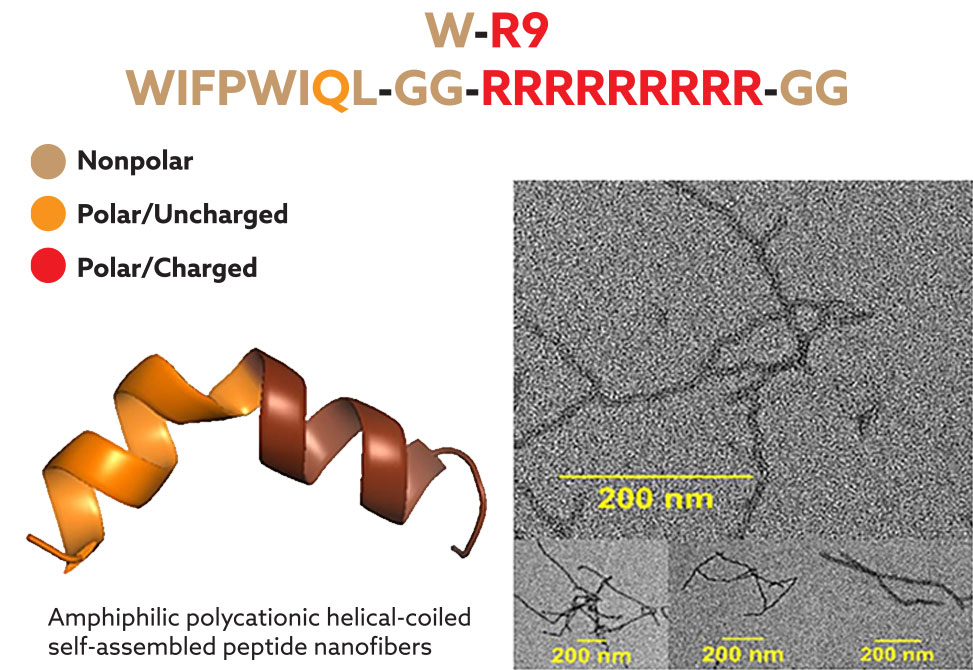Self-Assembled Nanofibers
Reflecting work in the Sabatino Lab
Amphiphilic peptide sequences are conducive to secondary structures that self-assemble into higher-ordered peptide nanostructures. A select set of amphiphilic polycationic peptides displayed stable helical-coiled structures that self-assembled into peptide nanofibers.
Researchers in the Sabatino Group at Carleton University, in work published in Bioorganic & Medicinal Chemistry Letters, show that the progression of peptide fibril formation revealed short protofibrils that extended into thin filaments and into an entangled network of nanofibers over an extended incubation period of five days. Ligand binding with 8-anilinonaphthalene-1-sulfonic acid, ANS, and Congo Red, CR, confirmed the amphiphilic helical-coiled peptide structure assembly into nanofibers, whereas curcumin treatment led to inhibition of fibril formation.
Considering the vast repertoire of fibrous biomaterials and peptide or protein (mis)folding contingent on fibril formation, this work relates the molecular interplay in between sequence composition, structural folding and the ligand binding events impacting peptide self-assembly into nanofibers.


